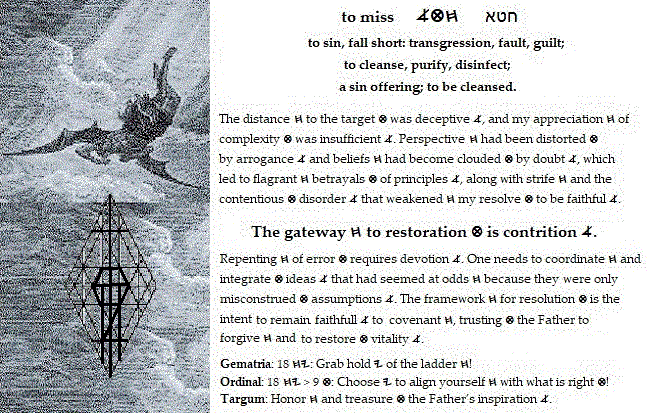Murmurs
the alphanumeric of error: is it Sin!?

This illustration presents a definitions of the Hebrew word often translated as "sin." Meanings are derived from the alphabetical emblems as they appear in Torah’s original language. The wide application of the meanings is suggestive of the rich subtexts that open when, without denial of a word’s etymology, readers explore texts in the context of the language in which they were first written.
The oracular script of Torah in its original form has many names in the world of men; but when read as the language of Torah, it is called Sinaitic Hebrew, which is comprised of the Phoenician alefbet that is known among many as the “Moses Script.” Traditional meanings are supported by the oracular senses of a word, but definitions are not limited by the window through which the traditions of man peek at the "words" of the infinite.
Torah’s original emblems, which are precursors to the Western alphabets, served as the common language in Egypt at the time of the Exodus; and they endured as the written language of
Torah
through the reign of King David, and beyond. Not wholly forgotten in the world of men, they are still used in remote areas of Yemen in these dark modern times. The language was chosen as the vehicle for delivery of Torah because it was the common language of the Egyptian
nations under the dynasties of Pharaoh.
Whether or not we
look to share in the work by which the oracular dimensions of Torah will regain general appreciation, we ought to have an interest in how King David saw the world, with interest, also, in how he approached the scriptures upon which his world was founded. We know from the discoveries at Qumran that David read the
Lively Oracles of HaShem
in the pattern required of Moshe on Sinai. The subtleties of that pattern contributed to his understanding of the Spirit that called him from the sheepcote and prepared a seat for him at the table of King Saul.
In our modern lives, as in days of old, w
| Whispers | Emblems | |
|
site |
Table of Contents |
book |